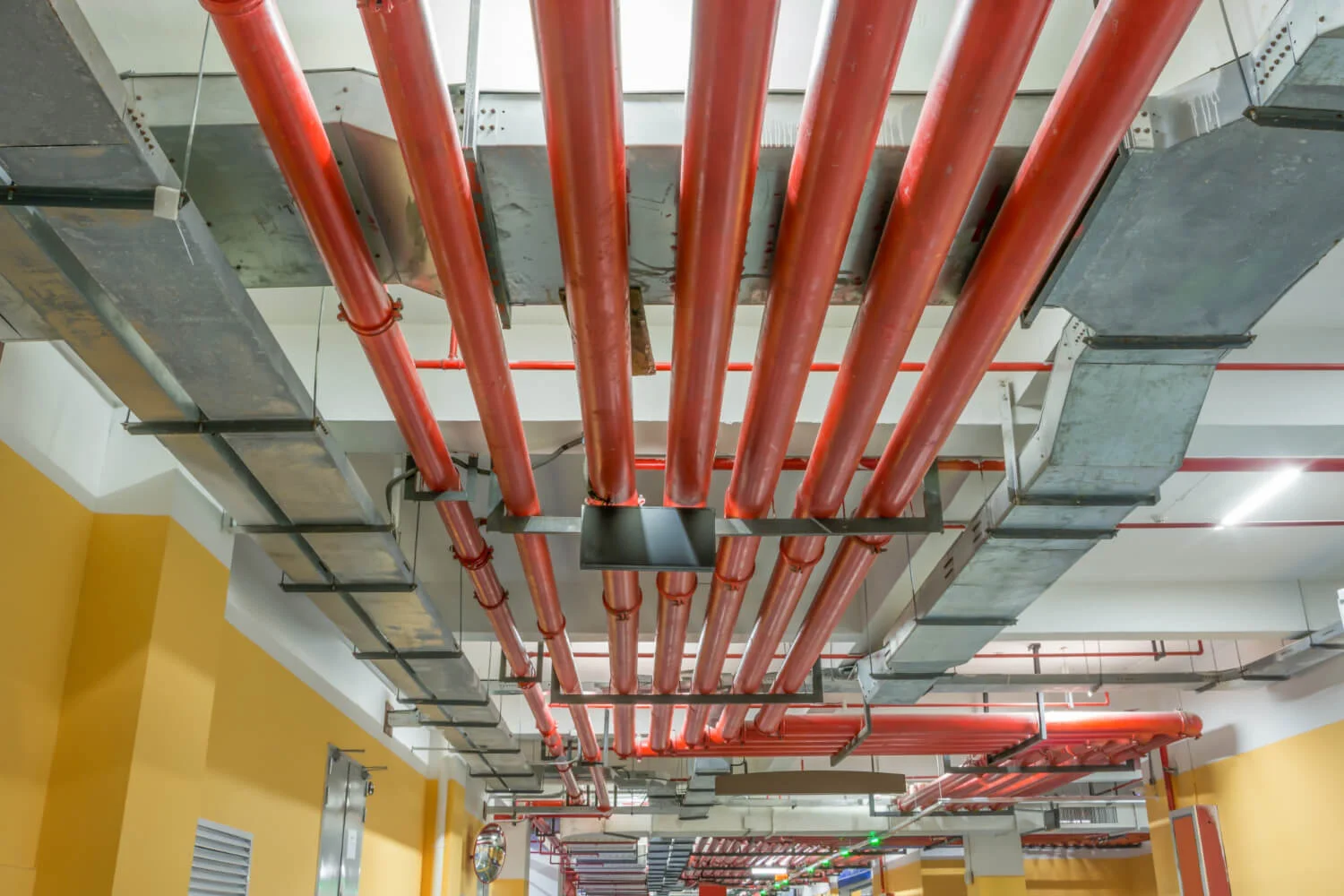Sprinkler Systems

Protect, Prevent, Peace of Mind: Fire Sprinkler Systems by All American Fire Protection.
In the face of fire emergencies, every second counts.
We offer state-of-the-art Fire Sprinkler Systems designed to detect and respond to fires instantly, ensuring the safety of people and the preservation of assets.
Why Fire Sprinkler Systems?
Fire Sprinkler Systems are a cornerstone of comprehensive fire protection. These systems are proven to:
- Save Lives: Rapid response reduces the risk of injuries and fatalities.
- Limit Property Damage: Quick action prevents fires from escalating, minimizing damage.
- Lower Insurance Premiums: Many insurers offer deductions for properties equipped with sprinklers.
Features of Fire Sprinkler Systems
- High Sensitivity: Immediate detection of temperature changes signaling potential fires.
- Reliability: Designed for minimal false activations.
- Eco-Friendly: Uses water efficiently, ensuring minimal wastage.
- Aesthetically Pleasing: Our systems blend seamlessly with your interiors, without compromising safety.
Get Your Free Safety Survey
Within 24 hours we will setup an appointment for your free on-site safety survey to see how we can help protect your business.
CALL US NOW!
FAQ
Frequently asked questions
How often do suppression systems need to be inspected?
Local codes require inspections for kitchen suppression systems every 6–months.
How can I prevent kitchen fires?
There are a number of steps you can take to prevent kitchen fires including:
- Installing a Kitchen Fire Suppression System.
- Making sure you are up to date with kitchen fire suppression inspections, and you’re compliant with fire codes
- Cleaning your range hoods, walls and grease traps when they collect grease, as grease has a high risk of igniting when exposed to flames or heat
- Keeping flammable trash and shipping materials away from open flames or heating devices
- Establishing a fire safety plan
What happens during a kitchen fire suppression system inspection?
The All American Fire Protection inspection process includes:
- Visual inspection of conduit and location of the appliance, duct, and plenum nozzles.
- Inspection of the link line and position of detectors.
- Inspect the automatic actuation of the fire system by cutting a terminal test link.
- Test the remote pull station.
- Verify electric and gas shut off when the system is activated.
- Replace fusible links and center link housings.
- Verify the gauge on pressurized tanks is at the proper level.
- Internal inspection of non-pressurized tanks for corrosion.
- Examine cylinders to record and verify the hydro test date.
- Examine the regulator to record and verify the test dates.
- Replace system cartridges when required by the manufacturer. (For an additional charge)
- Remove and clean nozzles to ensure they are not clogged. Replace nozzle caps.
- Test all electrical interlocks (Electric shut-offs and fan interlock requirements vary by the local authority having jurisdiction)
- Inspect the piping and copper tubing for tightness.
- Record any obvious deficiencies discovered during the inspection.
Areas We Serve
-
Cherry Point, North Carolina
-
Concord, North Carolina
-
Cool Springs, North Carolina
-
Emporia, Virginia
-
Emerald Isle, North Carolina
-
Fort Mill, South Carolina
-
Henrico, North Carolina
-
Kannapolis, North Carolina
-
Lewiston Woodville, North Carolina
-
Mint Hill, North Carolina
-
Newport, North Carolina
-
North Myrtle Beach, South Carolina
-
Pawleys Island, South Carolina
-
Rock Hill, South Carolina
-
Salter Path, North Carolina
-
Spring Lake, North Carolina
-
Williamston, North Carolina
Additional Services
